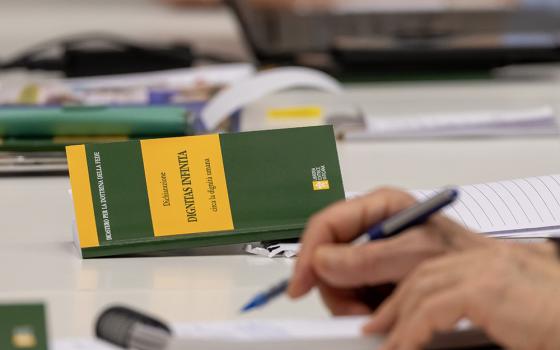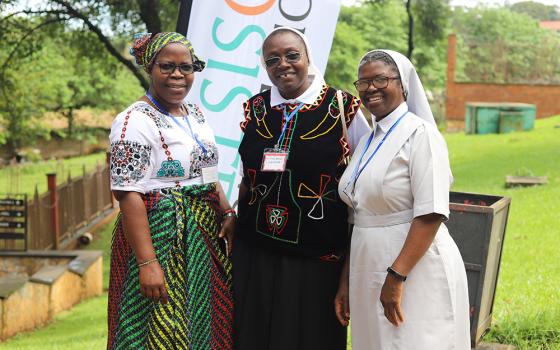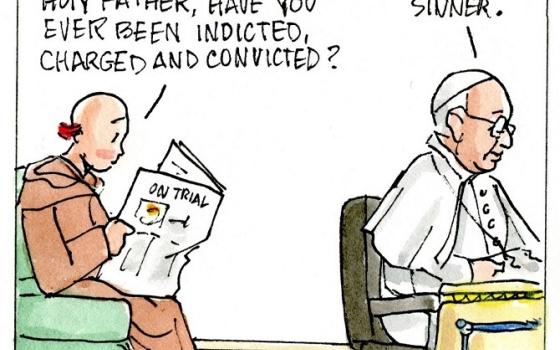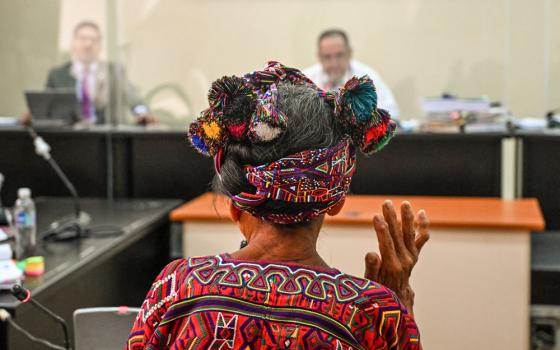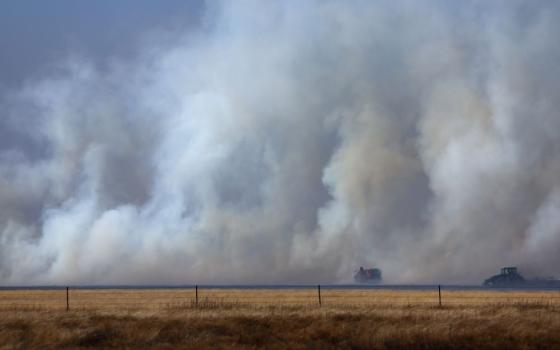People mourn during a memorial service at the Sailors and Soldiers Memorial Hall of the University of Pittsburgh Oct. 28, 2018, a day after Robert Bowers shot and killed 11 people and injured six others. (CNS/Reuters/USA TODAY sports/Jeffrey Becker)
On Saturday, Oct. 27, 2018, Robert Bowers acted on a hate that had festered inside him for some time and turned the nation's eyes toward a grieving Pittsburgh community.
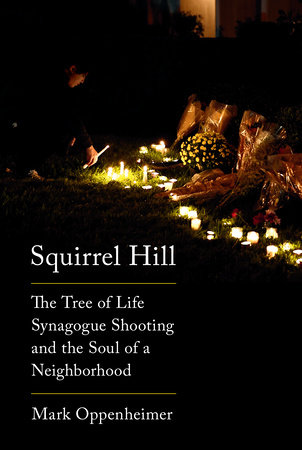
Bowers posted online that "HIAS likes to bring invaders in that kill our people. I can't sit by and watch my people get slaughtered. Screw your optics. I’m going in." He then drove to the Tree of Life synagogue Tree of Life synagogue in Squirrel Hill, the center of the region's Jewish community, and killed 11 people who had gathered for services that morning.
That heinous act constitutes the most deadly antisemitic attack in American history and drew the nation's attention to the Pittsburgh neighborhood Squirrel Hill. As many struggled with the horrific implications of what the attack meant for the nation, the state of racial and religious tensions in the United States and the power of antisemitism to fuel such acts of animosity, Mark Oppenheimer felt compelled to study this moment for far more personal reasons. His family came from Pittsburgh, had helped to establish the Jewish community here in the 19th century, and had lived in Squirrel Hill for decades. While his father moved away in his youth and Oppenheimer himself never lived in the neighborhood, he still had relatives in the community. Bowers' attack touched home.
The task that Oppenheimer set for himself was both narrowly focused and deeply ambitious. He sought to plumb "the soul of a neighborhood." The result is Squirrel Hill: The Tree of Life Synagogue Shooting and the Soul of a Neighborhood, an extraordinarily intimate and insightful book that balances Oppenheimer's clear love for Squirrel Hill with a dispassionate reportorial perspective.
Oppenheimer moves in loose chronological order through the experiences of members of the Squirrel Hill Jewish community across the year following the shooting. His story begins with the shooting and ends at the first anniversary. His real concern is to both honor and examine the state of the neighborhood's Jewish essence, its soul.
Most people familiar with Pittsburgh see Squirrel Hill as a Jewish neighborhood, even though, as Oppenheimer points out, Jews have never constituted more than a third of its population. Pittsburghers began settling there in the late 19th century, though the neighborhood really took off roughly when Jews arrived in the decades after World War I. The city spread eastward both to accommodate the expanding overall population and to allow a largely professional class to escape the pollution that the steel mills pumped out closer to downtown.
This escape from overcrowded and polluted neighborhoods appealed to Catholics too, and the Redemptorist fathers pulled up stakes in their more industrial Strip District neighborhood, sold the St. Philomena church grounds to the Pennsylvania Railroad and started a new parish of the same name in what they thought would be an expanding Squirrel Hill. That parish produced America's first male saint (John Neumann), the beatified Francis Xavier Seelos, champion boxer Billy Cohn and two Pittsburgh mayors. Though the parish flourished, the Redemptorist fathers' ability to staff it waned, and they exited there in 1994. Bishop Donald Wuerl suppressed the parish and the Catholic institutional presence in Squirrel Hill disappeared.
While Catholic officials pulled out of Squirrel Hill, Jewish community leaders recommitted to the neighborhood. They invested tens of millions of dollars in the physical infrastructure. In fact, the Jewish Community Day School bought the former St. Philomena school and rectory and now provides private religious education in the very classrooms that Catholics once did. My Jewish son-in-law attended elementary school in the same building in which my wife and I baptized our three children.
Police officers are seen after a gunman killed 11 people Oct. 27, 2018, at the Tree of Life Synagogue in Squirrel Hill, Pittsburgh. Robert Bowers opened fire that morning during a service at the synagogue, also wounding six others. (CNS/Reuters/John Altdorfer)
But the Jewish institutional presence has also suffered in recent years, as Oppenheimer notes throughout Squirrel Hill. Synagogues have struggled to attract active members even as the neighborhood has prospered economically and remained one-third Jewish. The shooting itself highlights this very phenomenon. While the killings took place in the Tree of Life synagogue, congregants from three different worship communities died. Two of these synagogues rented space in Tree of Life. The New Light congregation did so because they could no longer afford to keep their own building open, and Dor Hadash determined never to assume the burden of owning and maintaining a building. The Tree of Life synagogue rented out space in part because they needed to supplement the income that their declining membership, down nearly 80% from its peak, could provide.
Advertisement
What then does the shooting reveal about Squirrel Hill's soul? In Oppenheimer's telling, the soul has a persisting Jewish character even as the visible evidence of this has transformed in recent decades, and in many cases disappeared. While many synagogues remain, and the institutional presence might even have expanded with the relocation of the Jewish Community Center to the neighborhood, others are gone. The Jewish delis, Jewish-owned clothing stores, kosher butchers and bakeries all closed between 1980 and 2017, as the author notes.
Oppenheimer finds Squirrel Hill's soul in the commitment of so many Jews to stay in the neighborhood, and in individual Jews who preserve and often revive Jewish religious practices. The chevra kadisha, the burial society that accompanies bodies from death to internment, relies on volunteers to stay overnight with the dead. Squirrel Hill has two. There are multiple Jewish elementary schools. In the wake of the shooting, Jewish neighbors supported each other. They did not bicker over the distribution of money raised to support the families of the dead and injured. They joined in memorial services for the dead. They maintained a concentrated urban Jewish presence unlike in most other cities where the Jewish population dispersed to the suburbs.
Robert Bowers posted that he was "going in" just before he entered Squirrel Hill. Mark Oppenheimer explains, in loving and rich detail, just what Bowers had determined to enter and hoped to destroy. What we learn from Squirrel Hill is why, though Bowers struck at the heart of the neighborhood, he failed.



